Caribou and Reindeer around the world

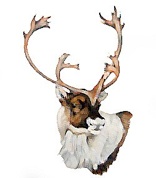
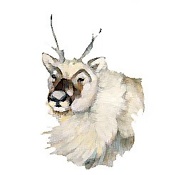
All caribou and reindeer belong to the same species, Rangifer tarandus. Seven subspecies are recognized, though it is debatable whether all of these subspecies are valid, given the diversity of ecotypes within each subspecies.
Ecotypes are defined as genetically distinct subpopulations within a species that are capable of successfully interbreeding with other ecotypes. Ecotypes generally arise from environmental heterogeneity. With the genus Rangifer, ecotypes may be migratory or sedentary, and may live on tundra, high arctic islands, the boreal forest or montane forests.
Please note that all illustrations are property of LS Vors and may not be used without permission.
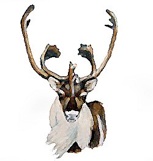
Barren-ground caribou (Rangifer tarandus groenlandicus)
Found in: northern Canada, Greenland
Behaviour: Migratory, lives in large herds of >1000
Habitat: Arctic tundra (summer range), boreal forest (winter range)
Special status: Least concern according to IUCN
At left: A bull barren-ground caribou in velvet. The velvet will fall off his antlers in late summer in anticipation of the rut, where he will use his antlers to spar with other bulls for breeding rights.
Grant’s caribou (Rangifer tarandus granti)
Found in: Alaska, Yukon
Behaviour: Large migratory populations as well as small, non-migratory populations
Habitat: Arctic tundra, boreal forest, alpine meadows and montane forests
Special status: Least concern according to IUCN
At right: A bull Grant’s caribou of the Denali herd in late autumn. Throughout his lifetime he will face many predators including grizzly bears, wolves, wolverine and humans.
Peary caribou (Rangifer tarandus pearyi)
Found in: Canadian high arctic islands
Behaviour: Small, relatively sedentary populations
Habitat: Arctic islands above the treeline
Special status: Endangered according to COSEWIC
At left: A bull Peary caribou in mid-winter. Peary caribou populations have plummeted over the past half-century. Their decline may be linked to a combination of climate change and over-harvesting.
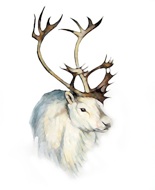
Reindeer (Rangifer tarandus tarandus)
Found in: Northern Scandinavia and throughout Siberia. Introduced domestic populations exist in Iceland, and parts of Canada and Alaska.
Behaviour: Large migratory herds, or small non-migratory herds. Domestic herds are kept in specific grazing areas.
Habitat: Tundra and taiga
Special status: Least concern according to IUCN
At left: A bull reindeer in southern Norway. His ancestors have been tended by Sami herders for thousands of years.
Svalbard reindeer (Rangifer tarandus platyrhynchos)
Found in: The Svalbard islands, north of Norway
Behaviour: Small, relatively sedentary populations
Habitat: High arctic islands above the treeline
Special status: Least concern according to IUCN
At right: A female Svalbard reindeer in late winter. Her thick white coat and short legs minimize heat loss in the harsh arctic climate.
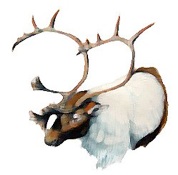
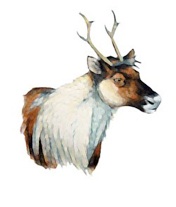
Woodland caribou (Rangifer tarandus caribou)
Found in: Canada’s boreal forest, the Quebec-Labrador tundra, and mountains in British Columbia, Yukon and parts of Alberta.
Behaviour: Small, non-migratory populations in the boreal forest, large migratory herds on the QC tundra, and small migratory herds in the Rocky Mountains.
Habitat: Boreal forest, montane forests, alpine meadows and tundra
Special status: Threatened according to COSEWIC
At right: A female woodland caribou in winter. Her antlers allow her assert her dominance at feeding spots.
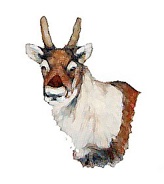
Forest reindeer (Rangifer tarandus fennicus)
Found in: Finland and the Kola Peninsula of Russia
Behaviour: Small, non-migratory populations
Habitat: Boreal forest/taiga
Special status: Previously extinct in Finland, though populations have recovered.
At left: A young female forest reindeer growing her first set of antlers. Caribou and reindeer are the only ungulates where females possess antlers as well as males.
